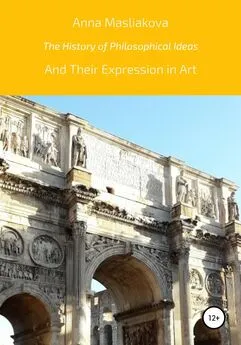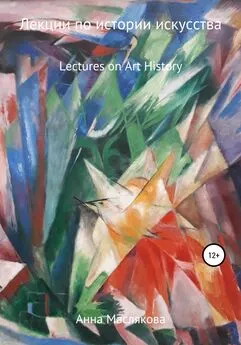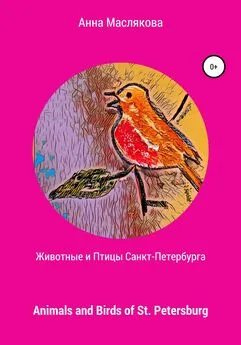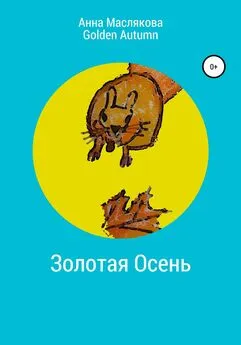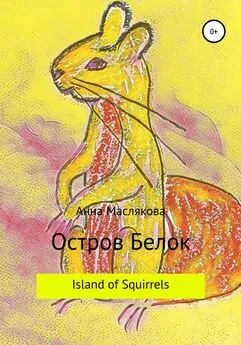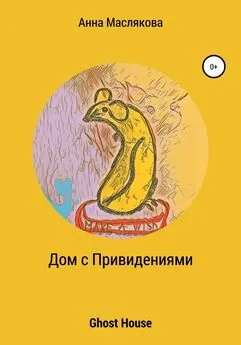Анна Маслякова - The History of Philosophical Ideas and Their Expression in Art
- Название:The History of Philosophical Ideas and Their Expression in Art
- Автор:
- Жанр:
- Издательство:неизвестно
- Год:2020
- ISBN:978-5-532-04940-6
- Рейтинг:
- Избранное:Добавить в избранное
-
Отзывы:
-
Ваша оценка:
Анна Маслякова - The History of Philosophical Ideas and Their Expression in Art краткое содержание
The History of Philosophical Ideas and Their Expression in Art - читать онлайн бесплатно ознакомительный отрывок
Интервал:
Закладка:
The Romans, on the contrary, prefer free standing structures frontally oriented and densely packed into a city. Let us have a look, for instance, at the Theater of Marcellus in Rome. Typologically, it conserves quite a lot from the Greeks, but the architectural edge closes the space off. Moreover, the Flavian Amphitheater – a giant object in the city of Rome – consists of two semicircles merged together and is by no means open-ended. Another allusion to the Greek architecture is that the décor of the Colosseum combines different orders – Doric, Ionic, Corinthian – and yet, the columns are not free standing (the Parthenon in Athens) but they are engaged in the walls (like in the Maison Carrée in Nimes).
The Romans were abscessed with technology and that allowed them to build in a very different way. The arch became the fundamental element of Roman architecture enabling them to erect bridges (The Alcántara Bridge), aqueducts (Devil’s bridge in Tarragona) and even the Pantheon – a temple to all the gods with a lot of altars.
The Romans were more interested in entertainment than in dramatic performances. And yet, the situation has been changing and not long ago they have started to organize concerts at the Colosseum, such as “The Three Tenors” in 1994.
How to Understand a Work of Art? Step I
There are places and works of Art that could change your life right away.
“The Ecstasy of Saint Teresa” by Gian Lorenzo Bernini located at Santa Maria della Vittoria in Rome. It was a rainy day and when I entered the church there it was – glowing in the dark, Mysterious and unreal.
“The Moses” by Michelangelo Buonarroti at San Pietro in Vincoli which differs greatly from the other sculptures decorating the Tomb of Pope Julius II. I came to the church early in the morning and there was nobody inside it but me.
Michelangelo’s “Pieta” which I noticed during my second visit to Saint Peter’s Basilica. By the way, despite the fact that it is located rather far from the isle and you need a very good camera to take a photo, the sculpture is absolutely amazing.
Argentine Tango full of passion and sensuality also will not leave you unchanged.
Nevertheless, from time to time it could be helpful to make an effort and use our imagination in order to find out how monuments of the past might have looked like in those days when Roman Culture reached its height.
On the one hand, during my first visit to Santa Maria Maggiore, the interiors of which are richly adorned with mosaics in Byzantine style, I tried to “deconstruct” it, metaphorically speaking, so as to appreciate the Beauty of the original church which dates back of the 5 thcentury A.D.
On the other hand, while wandering around the Roman Forum, the place where people used to gather and discuss important issues, I had to “reconstruct” half-destroyed or even missing buildings.
To sum it up, on the whole, there is a variety of possibilities for those who are determined to succeed in studying Art. And if one of the methods mentioned above do not appeals to you, you should try another one.
To be continued…
Chapter II
Once Upon a Time
I decided to go from Minsk to Vilnius. Surprisingly, it turned out that it was not a tourist trip as I had expected, but a pilgrimage tour.
Firstly, when I passed through the Sharp Gate or Ostra Brama and entered the old part of the city, it dawned on me that there are a lot of churches in Vilnius. Suffice it to say that while walking from the Gate to the Vilnia River I visited Roman Catholic Church of St. Teresa in Baroque style, Orthodox Church of St. Nicholas in Neo-Byzantine style, Roman Catholic Church of St. Anna in Flamboyant Gothic and Brick Gothic styles and even Choral Synagogue in Moorish style, etc.
Moreover, there is a marvelous Roman Catholic Church of St. Peter and St. Paul on the other bank of the Vilnia River. Built in Baroque style, the church is richly decorated with sculptures and stucco reliefs inside and outside and thus it looks like a gorgeous porcelain casket. Needless to say, it completely took my breath away.
Secondly, despite the fact that the Memorial Museum of Mikalojus Konstantinas Čiurlionis is a little off the beaten track, it is definitely worth visiting. To cut a long story short, Čiurlionis’ Mysterious Paintings complemented by his Music which was being performed at the Museum made a strong impression on me.
Finally, when I returned to Minsk, I saw everything in a different light. Pardon me for mentioning it, but in spite of the fact that I had been studying in Minsk for about six years, I had never been in most of its churches until then. Wandering around the Church of Saints Simon and Helena, I realized that it bears striking resemblance to the Church of St. Anna in Vilnius. Furthermore, one day my friend took me to the Cathedral of St. Peter and St. Paul and showed the place where the choir is standing during the service. I will never forget how enchanting it was.
To sum it up, it seems to me that nothing happens accidentally; on the contrary, everything has its purpose. All you need to do is believe in yourself and you will live happily ever after, I presume.
Literary Essay II
Now when most parts of the world are on lockdown because of the virus and I have to work from home, my flat reminds me of Monastic Cell and I imagine myself being a Medieval Scholar who describes historical events and ponders the future.
As we all know, religious issues were of utmost importance in those days. Suffice it to mention “The Confessions” of Saint Augustine in which he is examining his own life, talking about his yearning for truth and his struggle with worldly desires, discussing the nature of sin and telling us about his conversion to Christianity.
At the same time, Chivalric Romances describing adventures of knight-errant and praising Courtly Love for idealized lady were extremely popular in the Middle Ages. For instance, “Lancelot, the Knight of the Cart” by Chrétien de Troyes or “Roman de la Rose” two parts of which were written by Guillaume de Lorris and Jean de Meun respectively. When I saw highly detailed miniature from illuminated manuscript depicting the Lover entering the walled garden in search of the Rose symbolizing his lady’s love, I was dazzled by its refined Beauty.
As for love, it is said that there were the so-called “Lovers of Teruel” who lived in the 13 thcentury and died young since the farther of the bride-to-be was against their marriage and made his daughter marry another man. One can find their tombs in the Mausoleum of the Amantes in Teruel – a city in Aragon where, by the way, there are a lot of buildings designed in the Mudéjar style bearing traces of Islamic Art. Rumor has it that William Shakespeare may have been inspired by this story of forbidden love when writing “Romeo and Juliet”.
During the Carnival of Venice, which also dates back to the Middle Ages, people could do what they liked and wear what they wanted hiding their faces behind elaborate Masks so that nobody could find out their identity. After all, life is a dream and only death “organizes” it, gives it shape and meaning.
And yet, let us hope for the best and continue our “investigation” following the example of Franciscan friar William of Baskerville, the main character of Umberto Eco’s novel “The Name of the Rose”.
Philosophical Issues II
The importance of Neoplatonism is that it provided the philosophical framework that dominated Medieval thought until the 11 th-12 thcenturies. And it continued to be a powerful instrument after the Reformation, during the Renaissance, the Enlightenment, etc. That is to say, it has been tremendously influential.
Firstly and most importantly, Neoplatonists thought of the Hierarchy of Being with Emanations from the One, the Divine Being, to Nous or Intelligence, Logos, then to the World Soul and, finally, to the Phenomenal World. Moreover, there was an upward movement, parallel to this downward Emanation, known as Epistrophê (conversion, turning back). And inasmuch as everything flows out from and returns to the One, this is the form of monism and pantheism.
To some extent there are also traces of the idea of the Divine Trinity in the Neoplatonic Cosmology. Plotinus says in “The Enneads” – “There exists a Principle which transcends Being; this is The One, whose nature we have sought to establish in so far as such matters lend themselves to proof. Upon The One follows immediately the Principle which is at once Being and the Intellectual-Principle. Third comes the Principle, Soul”. As for the problem of evil, according to Neoplatonism, there is no absolutely bad that has emanated from the One. Primary (natural) evil arises in the process of Emanation (certain levels are lower than the other), while secondary (moral) appears when people insert their affections on things below and follow their appetites rather than reason. In order to ascend to the Good, climb back up the ladder, one should start from contemplating nature so as to see the Order, unity and good in it then contemplate Form within one’s soul, proceed to the contemplation of Nous, the Cosmic Intelligence itself, the Form of all Forms and, finally, achieve the Ecstatic Reunion with the One. In this sense we should mention “The Ecstasy of Saint Teresa” by Gian Lorenzo Bernini.
As far as Beauty is concerned, their approach is quite similar. Plotinus writes that “Beauty addresses itself chiefly to sight; but there is a beauty for the hearing too, as in certain combinations of words and in all kinds of music, for melodies and cadences are beautiful; and minds that lift themselves above the realm of sense to a higher order are aware of beauty in the conduct of life, in actions, in character, in the pursuits of the intellect; and there is the beauty of the virtues”. “Let us, then, go back to the source, and indicate at once the Principle that bestows beauty on material things. Undoubtedly this Principle exists; it is something that is perceived at the first glance, something which the soul names as from an ancient knowledge and, recognizing, welcomes it, enters into unison with it. But let the soul fall in with the Ugly and at once it shrinks within itself, denies the thing, turns away from it, not accordant, resenting it”. “All shapelessness whose kind admits of pattern and form, as long as it remains outside of Reason and Idea, is ugly by that very isolation from the Divine-Thought. And this is the Absolute Ugly: an ugly thing is something that has not been entirely mastered by pattern, that is by Reason, the Matter not yielding at all points and in all respects to Ideal-Form. But where the Ideal-Form has entered, it has grouped and coordinated what from a diversity of parts was to become a unity: it has rallied confusion into co-operation: it has made the sum one harmonious coherence: for the Idea is a unity and what it moulds must come to unity as far as multiplicity may. And on what has thus been compacted to unity, Beauty enthrones itself, giving itself to the parts as to the sum: when it lights on some natural unity, a thing of like parts, then it gives itself to that whole”.
Ambrose, an Archbishop of Milan, introduced Saint Augustine to Neoplatonism and that provided the vehicle for his thinking his way beyond dualism towards a consistent Christian Theism. As we have mentioned before, the Greeks in various ways seem to say that we are ruled by Reason, while St. Augustine thinks that we are not ruled by what we know – we are ruled by what we Love. God illumines the human mind, sheds light on it so as to enable us to see the Form, the nature of things in the world of Particulars. He writes in his “Confessions” – “And what did it profit me, that all the books I could procure of the so-called liberal arts, I, the vile slave of vile affections, read by myself, and understood? And I delighted in them, but knew not whence came all, that therein was true or certain. For I had my back to the light, and my face to the things enlightened; whence my face, with which I discerned the things enlightened, itself was not enlightened”. The difference from Plato is that we do not grasp Forms in their transcendent status, whereas the difference from Aristotle is that we do not abstract Forms from our experience of Particulars.
Читать дальшеИнтервал:
Закладка:
